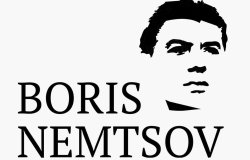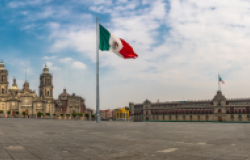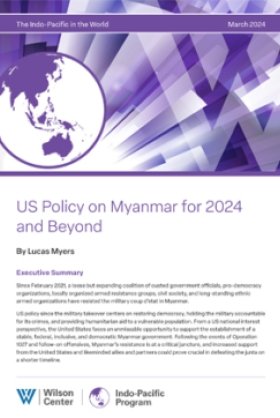298. Romania: The Difficult Apprenticeship of Liberty (1989-2004)
Aurelian Craiutu is Assistant Professor of Political Science at Indiana University-Bloomington. He spoke at an EES noon discussion on June 9, 2004. The following is a summary of his presentation. Meeting Report 298.
As eight post-communist countries entered the EU last May, Romania was among the few applicant countries that did not manage to implement the accession criteria. Like the other applicant countries, Romania has been aggressively lobbying to enter Western institutions and it has been successful in arguing for its geostrategic importance in Europe, as is reflected by the fact that it was admitted to NATO last June. Yet, despite the strides it has taken and its commitment to recreating the western ideal at home, Romania is still far behind most of its neighbors in its transition from communism to liberal democracy. Here, I will attempt to address the major obstacles to Romania's progress and the country's prospects for stepping up the pace of reforms in the near future.
The legacy of the past
There is little doubt that Romania's poor image and economic performance after 1989 can be linked to the absence of market reforms under communism that seemed to help other countries in the region. Hungary, for instance, had a second economy under communism, and the gradual development of this parallel economy paved the way for real market reforms and the transition to market economy in the postcommunist period. Similarly, Poland and Czechoslovakia had strong dissent movements (Solidarity or Charter 77), which successfully challenged the former communist elites in those countries. Romania suffered for not having such institutions in place, and was understandably behind the curve because of this.
Equally important—and perhaps related—was the way in which power was exercised. The Romanian case displayed a mixture of highly personalized and discretionary power, which consolidated personal dependence of office holders on the leader, while the state was looked upon as a source of personal power and enrichment. As a result, civil society was weak on the eve of the collapse of communism and its fragility did not bode well for the consolidation of the new democratic institutions. Political analysts have explained this weakness by also pointing to Romania's political culture, which traditionally stressed the gap between political elites and ordinary citizens and reinforced collectivist values, paternalism and civic apathy. It is true that, after years of oppression that finally degenerated into the obscene cult of the Ceausescus, many Romanians adopted a psychology of resignation and found various ways of accommodating themselves within the regime. But equally important was the absence of strong reformist wings within the Romanian Communist Party that, in turn, made elite pacts or settlements impossible.
The first decade (1990-2000)
According to the conventional wisdom, the emergence and consolidation of political pluralism are to a great extent dependent on the strength of civil society. Equally important for the crystallization of institutional arrangements are the mode of extrication from the old regime and elite pacts and settlements. The transition to an open society in Romania was initiated not through negotiations, as it was in Poland or Hungary, but through the sudden collapse of the regime. As a result, there were no institutional arrangements in place capable of providing channels for collective action and bargaining in an uncertain and highly volatile environment. The lack of pacts and negotiations before 1989 could account for the rhetoric of intransigence and the winner-take-all mentality of the main political actors that emerged after 1989, which delayed the consolidation of the new democratic regime.
The first year of the transition was marked by an increased polarization and radicalization of the population. The perception of most political actors was that an all-or-nothing approach was preferable to a more accommodating stance. The rapid proliferation of political parties after December 1989 brought weak pluralism that was not conducive to genuine political competition. The new political parties had weak constituencies, little grass-roots support and lacked well-defined doctrines and internal discipline. This led to a pattern of politics in which the main goal was to elicit popular acquiescence to elite-determined policies, which put a low emphasis on accountability. The upshot of the first free elections was a quasi-pluralist political system characterized by chronic disequilibrium and high party migration.
The political regime that emerged after 1989 maintained power for six years, but its regime was highly polarized between reluctant democrats and prophets of the past on the one hand, and a radicalized but disunited opposition that wanted a clear break with the past but lacked the resources to challenge the ruling post-communist coalition on the other. As a result, the political configuration was not conducive for the emergence of a politics based on bargaining, compromise and self-restraint. On the contrary, it generated a winner-take-all mentality that hindered elite compromise, which was reinforced by the political events of the first half of 1990 and the distribution of power in Parliament. Nearly every issue on the legislative agenda was therefore overpoliticized to the point of excluding enlightened pragmatism and cooperation across party lines. The us-versus-them mentality led to the emergence of a polarized pluralism, characterized by an incompatible bilateral opposition, an ideological political style (as opposed to a pragmatic, consensual one), the central presence of one political party and an inefficient politics of outbidding and radical contestation.
Thus, it can be argued that until 1996 at least, the Romanian political scene displayed a ‘hybrid multipartidism.' As time passed, however, political parties began to consolidate and turned into slightly more professional organizations. The spectrum of political parties became more diverse, even if personal animosities between leaders often carried the day at the expense of deliberations on crucial issues. On a more general level, the party system in Romania began to display characteristics found all over Eastern Europe: splits in the camp of anti-Communist parties, crystallization of extremist forces and the absence of working-class parties. The political spectrum was divided between parties strongly committed to Romania's integration into the European structures and centrifugal forces that appealed to their constituencies by overplaying the nationalist card and criticizing international organizations for their alleged interference in Romania's domestic affairs. The only characteristic that clearly set Romania apart from its neighbors was the presence of relatively strong historical parties, which had not been eliminated from electoral competition during the first years of the transition.
By the end of 1996, it became clear that the policies carried out led to the coexistence of ‘virtuous' and ‘perverse' institutions that explain the country's muddling through the transition. The President and his government enjoyed considerable tutelary powers; they attempted to exercise broad oversight of all major political decisions, while rejecting in practice some of the principles of constitutionalism. Moreover, the limits of their powers were sometimes ill-defined and this ambiguity created confusion and furthered various forms of patronage and clientelism. Key political decisions were insulated to a certain degree from the influence of elected officials. For example, despite regulations that Parliament has formal supervisional authority over security services, the Romanian political and civil society achieved little control over the intelligence community while Parliament was incapable of monitoring the Romanian Intelligence Service's budget.
Finally, the emergence of clientelistic networks may explain the slow pace of economic reforms. As in other East European countries, in Romania the ‘natural' outcome of state socialism had been a perverted form of political capitalism, in which managers of state enterprises created parasitic private firms by using state resources and personal influence. What emerged was a system based on corruption and patronage networks, dominated by former state managers with close ties to the old and new regime. Cheap credits were generously given to bad economic agents, which eventually came to count on the government to clear off their unpaid debts. By failing to place state-owned enterprises under tight budgetary constraints, the government allocated a large portion of the state revenue to subsidize inefficient units in obsolete industries. Private enterprises were obstructed through heavy taxation and red tape, while the process of privatization based on an inefficient voucher strategy was overbureaucratized and lacked transparency.
Romania could have easily sunk into an abyss of corruption, clientelistic networks or a Bulgarian crisis if a rotation of power had not occurred in 1996. The new government was a "coalition of coalitions" that united parties with different programs. Privatization, industrial restructuring and the integration into European institutions loomed large on its political agenda. By 2000, the first signs of economic recovery began to appear. The most obvious success of the center-right coalition was the start of negotiations for membership in the EU and NATO.
Despite this progress, however, the new government had its problems. The delay in economic reforms can be explained by the lack of coherence of the government's agenda that was affected by constant bickering among coalition members, which often led to confusion and inability to implement radical reforms. Once again, the lack of a tradition of political accommodation and compromise took a heavy toll. Other problems surfaced when, for example, the reform of the banking system went ahead, but industrial restructuring lagged behind. Strengthening the independence of judiciary also proved to be an impossible task. Moreover, despite the widely publicized campaign against corruption and the misuse of public funds for private enrichment, the results were less than satisfactory. These lingering problems demonstrated that Romania needed a new political style and the ‘de-emotionalization' of politics as a means of encouraging substantial debates on issues of public interest.
Reforms after 2000
A second peaceful rotation of power occurred in November 2000, thus confirming that Romania had passed the formal test of political democracy. The new government under the leadership of Adrian Nastase proposed an ambitious agenda that included not only structural economic reform, but also major changes in other equally important areas. One of these areas was constitutional reform. In 2003, Romanian citizens approved revisions to the 1991 Constitution, which were meant to bring the nation's fundamental legal structure into harmony with EU requirements.
The amplification of basic human rights, the expansion of property rights and the development of mechanisms for judicial review were among the key provisions of the new amendments. The constitutional amendments also guarantee the freedom to establish business operations. Article 41 of the Constitution regarding property rights was amended to guarantee such rights to all individuals. Under the new amendments, foreigners and stateless persons are granted the right to acquire title to land in Romania subject only to the terms and conditions of the treaty regarding Romania's adhesion to the EU and other treaties to which Romania is a party, and subject to conditions of reciprocity. Public office is guaranteed to be open to all Romanian citizens residing in the country with a guarantee of equal opportunity for men and women. The new amendment eliminated the phrase "only Romanian citizens" which was not in compliance with international treaties and restricted the right of Romanians with dual citizenship to hold such positions. Also, EU citizens may vote and be elected as representatives of local public administrations, subject to the fulfillment of the requirements set forth by organic law.
The scope for referral to the Constitutional Court was also extended. Upon request of the Presidents of the two Chambers, or upon request by 50 deputies or 25 senators, the Constitutional Court is now competent to decide upon the compatibility of international treaties with the Constitution. Parliament no longer has the power to reverse the effects of a declaration of unconstitutionality by a two-thirds majority. It must now adjust the law so that it becomes constitutional. Yet, the new amendments did not satisfy all of the problems with the 1991 Constitution, for example, the emergency ordinance procedure did not address the potential for undue state influence over the judiciary or provide for a clear separation of powers.
Sustainable growth is heavily dependent on the quality of governance in a particular country. Good governance implies a strong and efficient state apparatus that meets the demands of its citizens and is not preyed upon by rent-seeking, corrupt, bureaucratic officials. Inefficient bureaucracy has been very entrenched in Romania. Hence reforms in this particular area have been regarded as a priority and this topic has gradually climbed to the top of the agenda of the EU-Romania relationship in recent years. A consensus emerged that reform should advance on decentralization and a clear assignment of attributions and resources (revenue) according to transparent and accountable criteria, as well as on civil service reform, including the creation of a professional, politically neutral and stable bureaucracy to carry out the daily routine of public service delivery and assist the political decision-makers with technical advice.
The foundation of a new bureaucratic environment was created by Parliament through the enactment of Law 7/2004 regarding ethics for public officials (the "Ethics Act"). The adoption of the Ethics Act has been viewed by the current government as a significant step in the reform of Romania's public administration, as well as a requirement for EU accession. Also a comprehensive Anti-Corruption Law was adopted in April 2003. In fact, this was a package of laws including, among other things, the assets and interests disclosure requirements for top dignitaries and civil servants. According to the new regulations, the recruiting of impartial and highly qualified public officials will have to be based upon the following principles: equal opportunity and public examinations. In addition, a new National College of Public Administration was established in 2001, based on the French model.
During the first post-communist decade, inappropriate measures, disparate enforcement and confusing requirements of Romania's fiscal regime were the major factors keeping foreign investment low. A remedial step was taken in 1999, when then-president Emil Constantinescu embarked upon a determined effort to create a new tax regime through the creation of the Presidential Tax Reform Commission. Five years of legislative bickering and taxpayer confusion followed until, on January 1, 2004, the long-awaited Romanian Fiscal Code (the "Law" or the "Tax Code") came into force and brought unity to Romania's fiscal laws previously governed by a myriad of legislative acts and government ordinances.
The new Law consolidates matters formerly governed by separate legal acts, namely, the profit tax, income tax, value added tax, income tax applicable to non-residents and to the income of representative offices of international companies, excise tax, local taxes and fees and income tax applicable to micro-companies are all now incorporated into the new Tax Code. The Romanian Tax Code provides for a profit tax rate payable by Romanian and foreign legal entities of 25 percent for the profit obtained in relation to real estate located in Romania, including the profit from exploiting natural resources on or under the land or the profit obtained from transferring ownership rights. The new Tax Code introduced the concept of taxing capital gains on the sale or assignment of securities on real properties. The tax rate applicable to capital gains will be 10 percent (currently it is 25 percent) starting on January 1, 2006, subject to the fulfillment of certain requirements.
A few limitations of the new tax code are also worth pointing out. The rate of any profit tax is considered one of the most important means for the promotion of direct foreign investments. The new Law maintains the former 25 percent profit tax rate, which is slightly higher than the regional average. But this rate does not fully reflect the actual tax burden since the new law is fairly liberal in its interpretation of deductible expenses. In spite of these changes, Romania still lacks a cohesive long-term strategy supporting fiscal policy. The new Law has consolidated fiscal legislation (80 percent of Romania's fiscal provisions are now provided for in the Tax Code and not in various laws and ordinances), but at least 20 special state revenues are still not covered by the Tax Code.
Important changes have also been made to attract foreign investment in the past years. Foreigners who wish to engage in business activities in Romania and to become managing shareholders or associates of Romanian companies must obtain a long-term residence permit. An application for a permit must be accompanied by an endorsement provided by the designated state agency (ARIS); a certificate attesting to the person's lack of a criminal record; and evidence of the applicant's current health insurance coverage. In addition, a business plan must be submitted to ARIS containing information related to the nature, location and duration of the intended business, as well as an estimate of its expected employment requirements. Proof of an actual investment for business operations of a minimum of €70,000, for the investors who become shareholders, and €50,000, for persons who become associates in limited liability companies. The intended business operations must be beneficial to the Romanian economy by making significant contributions in cash or in kind through licenses for technology and know-how, etc., and contribute to the creation of new jobs. Critics of the government pointed out that these changes, important as they are, do not go far enough. In Hungary and in the Czech Republic, the minimum threshold requirement for foreign investors is merely €15,000 and €25,000, respectively. Hence, they argued, Romania's minimum thresholds of €70,000 and €50,000 are excessive in light of the international competition for foreign investment in the region.
Does Romania have a "functioning market economy"?
Although the major credit-rating agencies have improved Romania's credit, the country has yet to receive the status of "functional market economy" that is essential for the country's accession into the EU. A large part of the economy definitely operates as a market economy and would deserve an upgrade. But significant problems remain to be tackled, such as poor financial discipline, weak enforcement of market regulations, low transparency and stability of the regulatory framework, bureaucratic corruption, inefficient public administration and ineffectual judiciary.
There are economic indicators that seem to merit an upgrade of Romania's status from Brussels. Economic recovery has been under way for several years now, and the GDP grew by 5.7 percent in 2001, 4.9 percent in 2002 and 4.7 percent in 2003. Inflation, the big scourge of the past decade, has been reduced from 30.3 percent in 2001 to 17.8 percent in 2002, and 14 percent in 2003. The overall public indebtedness has stayed below 30 percent of GDP. Budget deficits have been kept under 3 percent in recent years. Moreover, the private sector's contribution to GDP formation is nearing 70 percent currently and its contributions account for over 55 percent of social capital in the economy and more than 70 percent of the employed population. Finally, the banking system is much sounder nowadays, after a massive clean up operation in the late 1990s and the introduction of a new regulatory framework. The range of financial products has increased remarkably and led to a boost of non-governmental credit. Some structural reforms (including privatization) and a more effective budget (tax) policy administration have been implemented recently. As a result, the country credit rating was raised to BB by Standard and Poor in October 2003.
Yet, the magnitude of the challenges ahead is daunting. The country will have to struggle with a series of trade-offs, such as low budget deficits or public financing of badly needed large infrastructure projects; free movement of capital flows and interest rate cuts or capital account liberalization. Of serious concern for any government that will lead Romania is the current type of competitiveness based on wage differential. Instead, Romania will have to join the ranks of innovation-driven economies, with which the country is trying to conform. In 2003, the balance of payments deficit rose to 6.5 percent (more than in 2002), thus pointing out the delays in the process of industrial restructuring. The engine of economic growth in 2003 was internal demand, not exports as had been the case before. The consumer credit also rose by 30 percent thus creating the conditions for a rise in inflation. Finally, the presence of soft budgetary constraints is reflected by the high level of arrears, which, at the end of 2002, represented approximately 38 percent of GDP (35.76 percent in 2001, 40.48 percent in 2000). Worth noting is that the arrears produced by the private sector have increased as well from 17.71 percent in 2000 to 20.9 percent in 2002. The most significant arrears appear in the energy sector as well as in the oil refinery sectors.
It is evident that industrial restructuring should become the priority on the agenda of any government in light of the forthcoming negotiations of the chapter on competition with the EU. When Romania signs this chapter, the policy of sponsoring unprofitable enterprises through overt or covert state subsidies will have come to an end. This will also be decisive for the sustainability of economic growth in the medium and long term. The key here is to have the right priorities and stick with them. There will also be new pressures on the budget. In light of Romania's new membership in NATO, it will have to allocate more resources toward modernizing its army. At the same time, many programs of the EU will soon require co-financing, which will require a wiser tax policy. Also, the government should continue to give some fiscal incentives to those who seek to invest in Romania, thus increasing its attractiveness among foreign investors.
About the Author
Aurelian Craiutu

Global Europe Program
The Global Europe Program is focused on Europe’s capabilities, and how it engages on critical global issues. We investigate European approaches to critical global issues. We examine Europe’s relations with Russia and Eurasia, China and the Indo-Pacific, the Middle East and Africa. Our initiatives include “Ukraine in Europe” – an examination of what it will take to make Ukraine’s European future a reality. But we also examine the role of NATO, the European Union and the OSCE, Europe’s energy security, transatlantic trade disputes, and challenges to democracy. The Global Europe Program’s staff, scholars-in-residence, and Global Fellows participate in seminars, policy study groups, and international conferences to provide analytical recommendations to policy makers and the media. Read more









